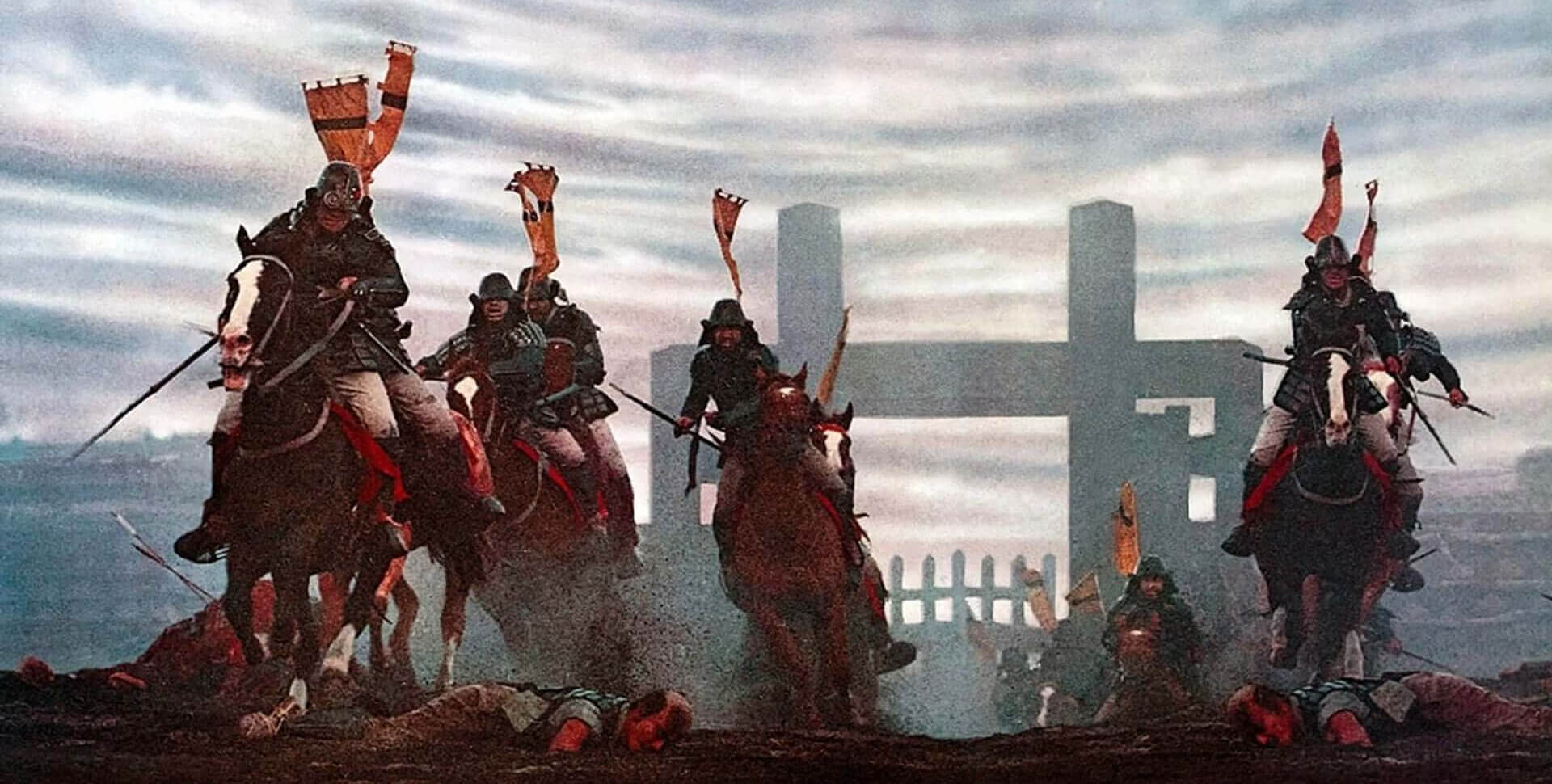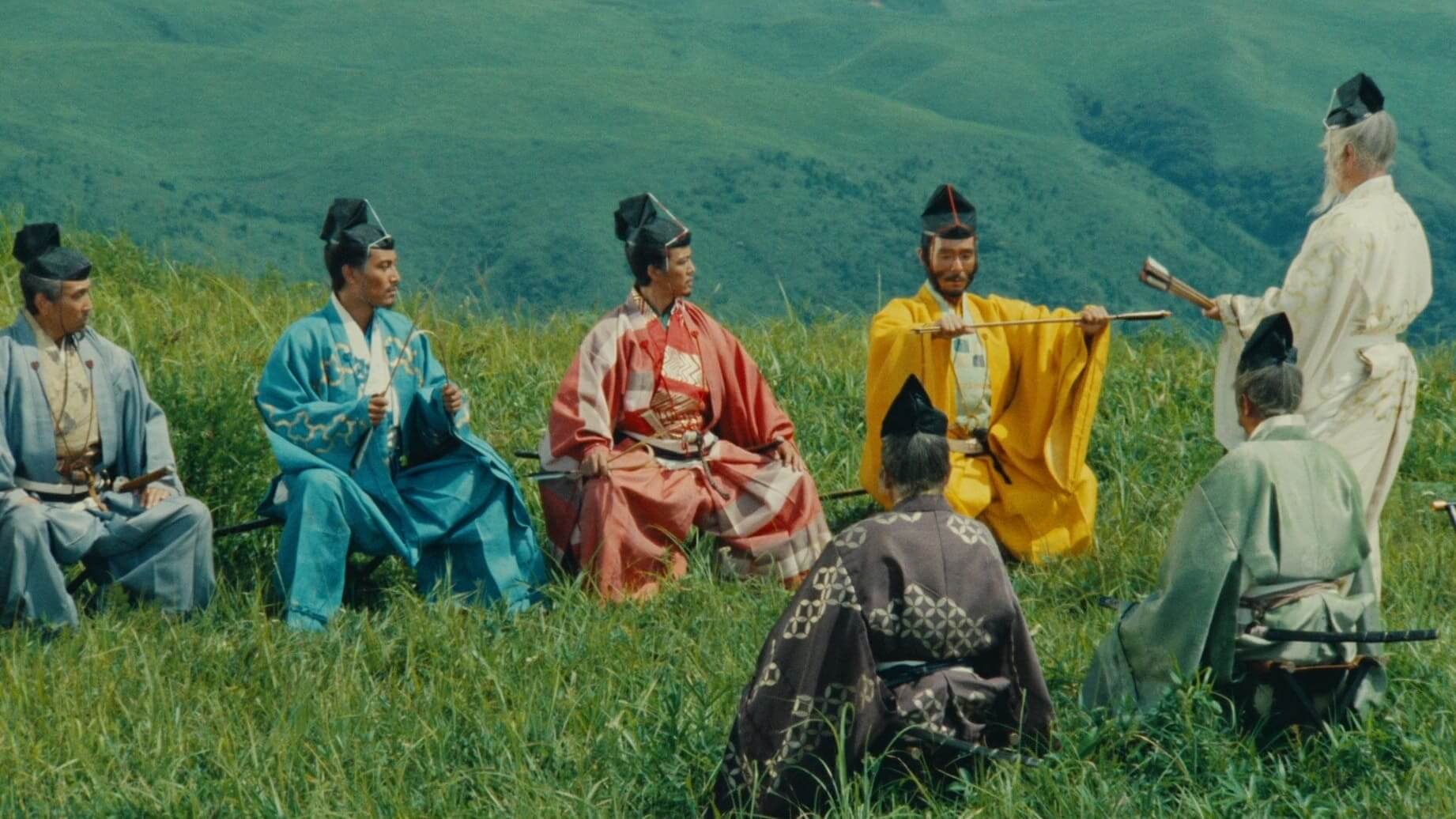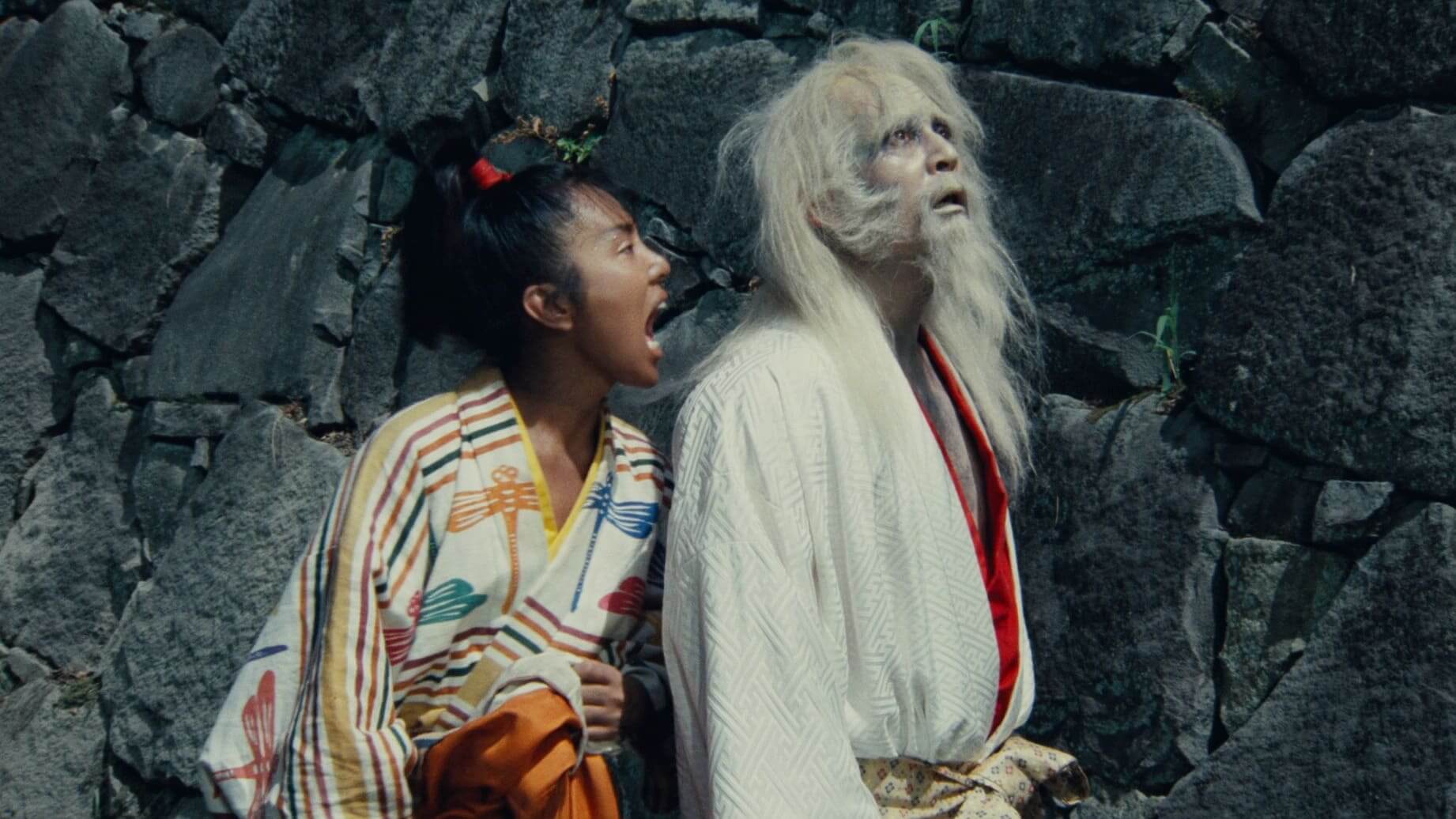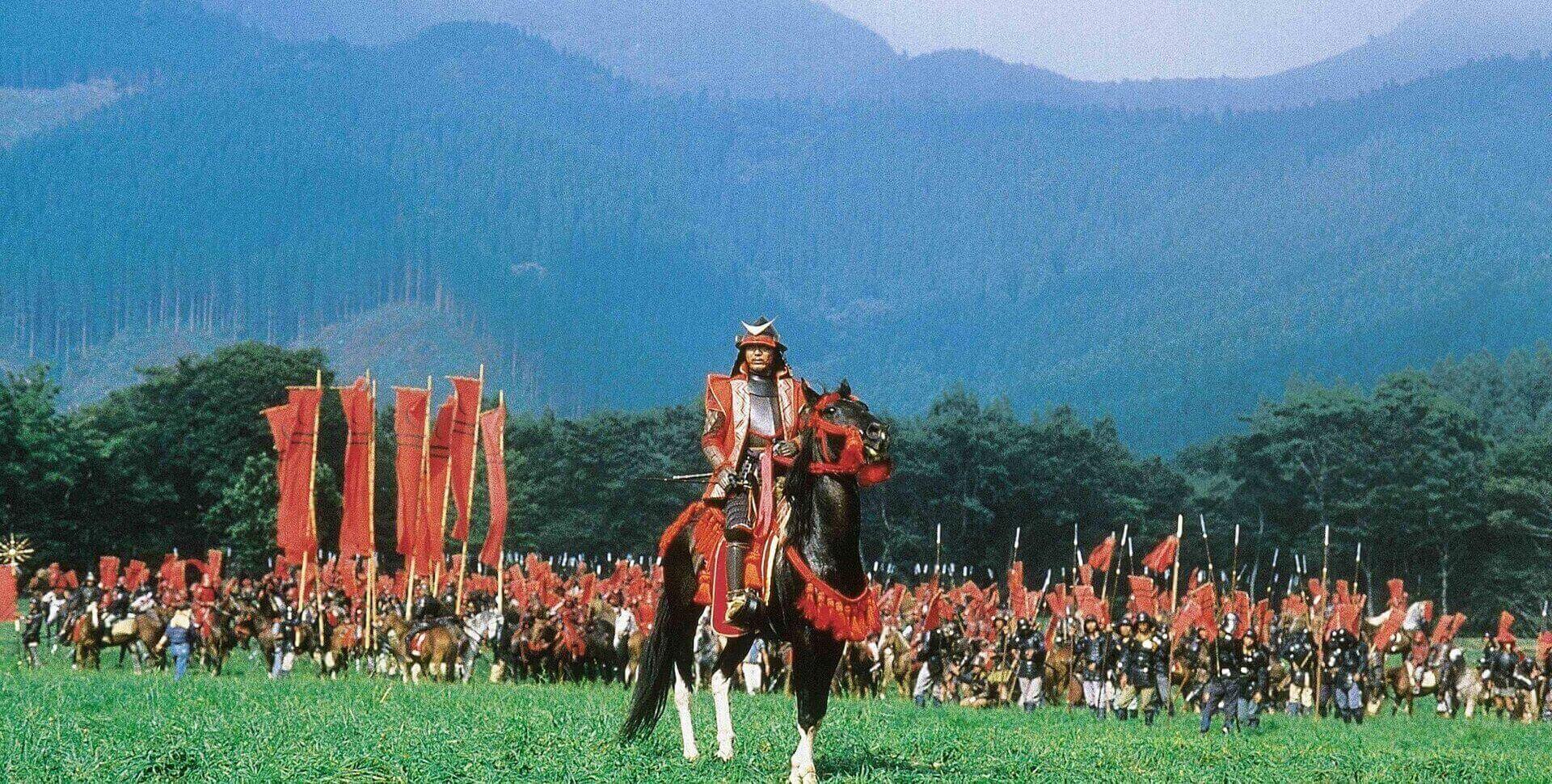Ran [1985] is Akira Kurosawa’s final samurai film and one of his finest works. The film follows aged warlord Hidetora Ichimonji, who abdicates his power to the eldest of his three sons. After an outburst erupts from the youngest son that ends with him being banished from the land, the two older children begin to fight each other for control, even shunning their father in the process. Now with his two oldest sons against him, Hidetora finds himself in the middle of an upcoming war being fought on his former lands as madness begins to take him over.
Redressing violence. Taking inspiration from Shakespeare’s King Lear, Kurosawa infuses the original play with a historical Japanese context. It’s no wonder that this film won an Academy Award for Costume Design, as the costumes for everyone from the lead characters to every minor extra in the large scale battle scenes is simply wonderful to look at, brightly colored so they stand out against the background, as well as perfectly anchoring the story into its era of history. It is very similar to one of Kurosawa’s previous films, Throne of Blood (1957), which also shares Shakespearean ancestry as an adaptation of Macbeth. Like with Throne of Blood, in Ran we see Kurosawa questioning the validity of violent ambitions, as characters’ pursuit of power only leads to tragedy.

Timely violence. In Ran, Kurosawa explores how violence reverberates across generations. While Hidetora is a figure we pity, the film always makes sure we realize that he is not some blameless victim. We are reminded several times that Hidetora himself has committed great violence in the past (he is, after all, a former warlord), having taken land and castles in the past much as his land and castles have been taken now. We even meet characters in the film that have been plundered or diminished by him significantly in the past — Lady Kaede being the most memorable, and having some of the most memorable scenes in the film — whose lives juxtapose interestingly now with the man that ruined them. Even if Hidetora isn’t responsible for starting this cycle of violence, he sure is responsible for continuing to propagate throughout his life both through direct conflict and the way his children were raised.

Cinematic violence. What makes Ran stand out from other historical films or genre work is how Kurosawa explores violence cinematically. There is a particularly notable battle scene around an hour into the film. It is almost expressionistic horror, featuring music without diegetic sounds and a focus on the imagery of men and women being cut up with blades or pierced with arrows. These people are running, afraid, and dying senselessly. It is bloody, and not in a cool or even fun way like in Quentin Tarantino’s similarly samurai-themed Kill Bill duology (2003-2004). Instead, it is horrifying, tragic, and worst of all avoidable. The dusty battle arguably has more in common with films like Apocalypse Now (1979) that attempted to make war appear as unglamorous as possible — as opposed to other samurai movies that had been made at the time and even since Ran first came out.

Framing violence. Last but not least, Kurosawa’s framing deserves mention. Great wide-angle shots consistently show us the land that is at stake in the brothers’ conflict, and what has been bled over in both the film’s past and present, and probably the future of these characters as well. This open-air connects these battles and cast to the larger world, as these conflicts certainly don’t exist in a vacuum where only the members of the Ichimonji family matter. I think that’s what ultimately makes this movie so good, that Kurosawa can let his painterly images speak in the film as much as his characters. In an age where so many newer films are so aesthetically dull in comparison, Ran continues to shine on brightly.
Ran cinematically and masterfully portrays the tragic nature of the conflict.

Watch Ran Now
